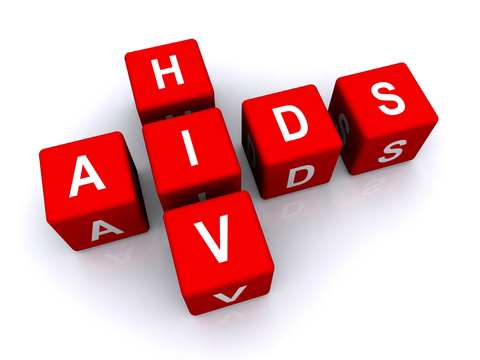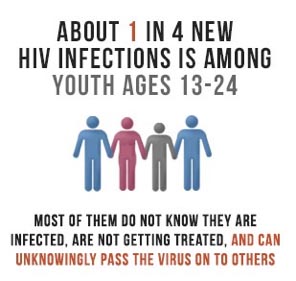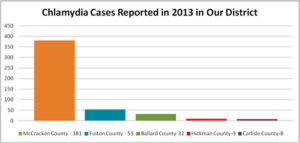Sex Education

HIV/AIDS
What is AIDS?
- AIDs stands for Acquired Immune Deficiency Syndrome.
- The immune system is your body’s way of protecting you from sickness.
- AIDS weakens your defense against infections.
- The AIDS virus is called HIV (Human Immunodeficiency Virus) and it is deadly!
How Do People Get AIDS?
There are three main ways people get AIDS. They get AIDS by sharing needles when they are shooting drugs, through sexual contact, or by being born to a mother who has AIDS.
HIV is passed from one person to another through contact with an infected person’s body fluids. These include blood and liquids from the sex organs, the bowels, or bladder.

You can avoid AIDS by not coming into contact with anybody else’s body fluids. However, you cannot get HIV from touching someone’s sweat, spit, or tears because there would not be enough viruses in these liquids of an HIV-infected person to infect you.
Some HIV-infected people may seem healthy, but they can still infect you if you have a cut or a sore that comes into contact with their body fluids.
What AIDS is NOT:
- A disease that affects only a few groups of people.
- A disease you can get from touching or hugging a person with AIDS.
- A disease you can get from sitting next to, eating or drinking water after or playing games with a person with AIDS.
- A disease you can get from sharing hot tubs, swimming pools, towels, telephones, or drinking fountains used by a person with AIDS.
- A disease you can get from being bitten by a mosquito or any other bug.
- A disease meant to punish anyone.
Is There a Cure or Treatment for AIDS
There is no cure for HIV or AIDS. But treatments can help people stay healthy longer, and HIV can be prevented. You can visit your local health department.
To find out more about how you can get tested for STD’s contact your local health department
Resources: AIDS.Gov – U.S. Statistics – https://www.aids.gov/hiv-aids-basics/hiv-aids-101/statistics
Birth Control
What is the cheapest and most effective form of birth control that can also prevent the spread of sexually transmitted infections? If you guessed abstinence, you are absolutely correct!What is abstinence? Abstinence means that you are not having sexual intercourse.
Everyone else is having sex, I feel like I should be having sex too! If you’re not having sex, you’re not alone. According to the CDC, in 2011–2013, 44% of never-married female teenagers (4.3 million) and 47% of never-married male teenagers (4.8 million) had sexual intercourse at least once. This means that less than half of teenagers in America are having sex.
What if I have had sex before, can I still choose to be abstinent? You don’t have to be a virgin to choose abstinence. If you’ve said yes to sex before that doesn’t mean you have to keep having sex.
How to say no when you’ve had sex before? If you’re getting pressured, try these responses:
“What’s the big deal? It’s not like you’ve never had sex before!”
I don’t want to do it again.
The big deal is that it’s my body and my decision.
“You did it before. Don’t you love me as much?”
I care about you a lot. That’s why I want to wait until I’m ready.
I thought I was ready before, but I wasn’t.
“Maybe your first time was lousy, but it’ll be better this time.”
It won’t be better if I feel pressured!
Excuse me, but what part of NO don’t you understand?

If you think you are ready to have sex, there are other forms of protection.
There are many ways to practice safe sex. Only you can decide which is best for you. A staff member at your local health department can discuss all of your birth control options with you and help you get the birth control you need.
Condoms –Only method that helps to protect both partners from sexually transmitted diseases. May be used with other birth control methods. No prescription needed. Can be easily carried by both women and men.
Birth Control Patch – An adhesive patch that contains the same hormones as birth control pills is placed on the women’s body. Patch is changed once a week for 3 weeks.
Birth Control Pill – Birth control pills that contain hormones that work by preventing the release of an egg from the ovary each month. Must be taken daily. Less pain and bleeding with periods. Can be used to regulate and delay periods.
Birth Control Shot (Depo-Provera) – Shot is given once every 3 months; must return to clinic for shot. No daily method to remember. Offers private use of birth control for women. May cause changes in menstrual flow.
Birth Control Vagina Ring (NuvaRing) – A small flexible ring that contains hormones is placed in the vagina to prevent the release of an egg from the ovary. Worn by patient for 3 weeks at a time. Easy to use. Low chance of irregular bleeding.
Diaphragm – A small round rubber cup which is placed in the vagina over the cervix up to 6 hours before sex. Must leave in vagina for 6 hours after sex. Keeps sperm from reaching the egg. Woman must be comfortable inserting and removing from vagina.
Spermicide – Chemicals which kill sperm and come in different forms. Placed in the vagina just before intercourse. No health risks. No prescription or exam needed. Works better when used with condom or diaphragm.
Aside from abstinence, condoms are the only birth control that reduces the risk of both pregnancy and sexually transmitted diseases, including HIV. No matter what type of birth control you choose to use, you should always use a condom too! But, in order to work, condoms must be used correctly and must be used every time you have sex. It’s important to know, however, that they cannot completely protect you and your partner from some STDs, like herpes, syphilis, or human papillomavirus (HPV), the virus that causes genital warts and cervical cancer. Also, condoms can break, slip, or leak, especially if they are not put on and taken off properly.
How effective are contraceptives against pregnancy?
- Abstinence – 0 out of 100 became pregnant
- Birth Control Shot – 6 out of 100 became pregnant
- Birth Control Pill – 9 out of 100 became pregnant
- Birth Control Patch – 9 out of 100 became pregnant
- Birth Control Vagina Ring (NuvaRing) – 9 out of 100 became pregnant
- Diaphragm – 12 out of 100 became pregnant
- Male Condoms – 18 out of 100 became pregnant
- Female Condoms – 21 out of 100 became pregnant
- Withdrawal – 22 out of 100 became pregnant
- Spermicide – 28 out of 100 became pregnant
To find out more about birth control options, contact your local health department
Resources:
Center for Young Women’s Health – http://youngwomenshealth.org/2013/02/22/abstinence/
CDC – Center For Disease Control – http://www.cdc.gov/nchs/data/databriefs/db209.htm
CDC – Know Your Condom Dos and Donts -http://www.cdc.gov/teenpregnancy/pdf/teen-condom-fact-sheet-2015.pdf
Human Papillomavirus (HPV)
What is HPV? Human Papillomavirus (HPV) is the most common sexually transmitted infection in the United States. Roughly one in four Americans are infected with HPV.
Most sexually active men and women will get HPV at some point in their lives. This means that everyone is at risk for the potential outcomes of HPV and many may benefit from the prevention that the HPV vaccine provides. HPV vaccines are routinely recommended for 11 or 12 year old boys and girls, and protect against some of the most common types of HPV that can lead to disease and cancer, including most cervical cancers. CDC recommends that all teen girls and women through age 26 get vaccinated, as well as all teen boys and men through age 21 (and through age 26 for gay, bisexual, and other men who have sex with men). HPV vaccines are most effective if they are provided before an individual ever has sex.

While the HPV vaccine can protect you against cancers caused by the Human Papillomavirus, it cannot protect you against all sexually transmitted diseases.
To find out more about how you can get tested for STD’s contact your local health department:
Resources:
CDC- Centers for Disease Control and Prevention – http://www.cdc.gov/hpv/parents/vaccine.html
Sources:
“Incidence, Prevalence, and Cost of Sexually Transmitted Infections in the United States..” Center for Disease Control. http://www.cdc.gov/std/stats/sti-estimates-fact-sheet-feb-2013.pdf
Chlamydia
What Is It?
Chlamydia is the most prevalent bacterial STD worldwide; along with genital herpes and human papillomavirus (HPV) infection, it is one of the three most common STD’s in the United States.
If you are a sexually active woman younger than 25 years, you should get a test for Chlamydia every year.
Chlamydia is most common among young sexually active people. It is estimated that 1 in 20 sexually active females aged 14-19 years has Chlamydia. In 2013, there were 483 reported cases of Chlamydia in our district. A large number of cases are not reported because most people with Chlamydia show no symptoms and do not seek testing.
How You Get It:
Spread during vaginal, anal, or oral sex with someone who has Chlamydia.
If You Don’t Get Treated:
- You can give Chlamydia to your sex partner.
- Can lead to more serious infection.
- Women and possibly men may no longer be able to have children.
What to Watch For:
Women:
- Discharge from the vagina.
- Bleeding from the vagina between periods.
- Burning or pain when you urinate.
Need to urinate more often. - Pain in abdomen, sometimes with fever or nausea.
- Symptoms show up to 7-28 days after having sex. Chlamydia affects women and men. Most women and some men have no symptoms’.
Men:
- Watery, white drip from the penis.
- Burning or pain when you urinate.
- Need to urinate more often.
- Swollen or tender testicles.

To find out more about how you can get tested for STD’s contact your local health department:
References:
Torrone E, Papp J, Weinstock H. Prevalence of Chlamydia trachomatis Genital Infection Among Persons Aged 14–39 Years — United States, 2007–2012. MMWR 2014;63:834-8.
Gonorrhea
Gonorrhea is a sexually transmitted disease (STD) that can infect both men and women. It can cause infections in the genitals, rectum, and throat. It is a very common infection, especially among young people ages 15-24 years. In 2013, there were 68 reported cases of Gonorrhea in our district. Visit your local health department to get tested for an STD.

What to Watch For:
Symptons show up 2-21 days after having sex.
Most women and some men have no symptons.
Women:
- Thick, yellow, or gray discharge from the vagina.
- Burning or pain when you urinate or have a bowel movement.
- Abnormal periods or bleeding between periods.
- Cramps and pain in the lower abdomen (belly).
Men:
- Thick yellow or greenish drip from the penis.
- Burning or pain when you urinate or have a bowel movement.
- Need to urinate more often.
- Swollen or tender testicles.
How You Get It:
Spread during vaginal, anal, or oral sex with someone who has gonorrhea.
If You Don’t Get Treated:
- You can give gonorrhea to your sex partner(s).
- Can lead to more serious infection. Reproductive organs can be damaged.
- Both men and women may no longer be able to have children.
- Can cause heart trouble, skin disease, arthritis, and blindness.
- A mother with gonorrhea can give it to her baby in the womb or during childbirth.
To find out more about how you can get tested for STD’s contact your local health department:
Resources:
CDC – Gonorrhea – http://www.cdc.gov/std/gonorrhea/stdfact-gonorrhea.htm
